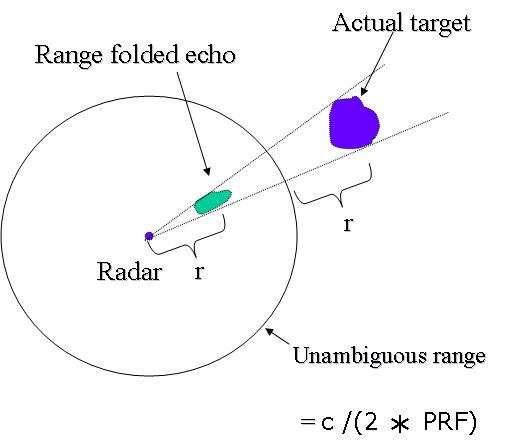Range Folding

Figure 1. Folding of a radar echo by two consecutive pulses
Pulsed radar systems measure distance as a function of
the amount of time that a pulse has traveled. It cannot however,
distinguish which pulse the returned energy has come from – the most
recent or a previous pulse.
Radar will depict the target as though it had been returned from the most recent pulse.
Range-folded echoes tend to occur when the atmosphere is relatively
stable near the surface of the earth and/or strong convection is
occurring at ranges typically greater than 275 km from the radar site.
| Characteristics of Range Folded Echoes |
|
When backscattered energy form a transmitted pulse is received after the next consecutive pulse has been transmitted, the corresponding echo is displayed at the proper azimuth (direction from the radar), but at a systematically incorrect range. The contemporary term for this is “range folding”, although traditionally the display of the reflecting target at a fictitious location is also called a “second-trip echo”.
The basic concept of range folding is illustrated in
Figure 1. The fictitious (“second trip”) echo is indicated at a range
from the radar equal to the distance of the true target beyond the
unambiguous range of the radar. The unambiguous range of radars is
generally large and second trip echoes are not a significant problem.
When higher PRF’s are used however second trip echoes can become a
serious problem. Doppler radars often operate with a PRF as high as
1200 hz. Range folding therefore becomes a significant problem. This
will be discussed in more detail in the module on Doppler radar
principles.